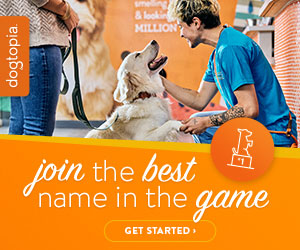Bark Busters Offers Tips To Help Dog Owners Travel Safely With Their Pets
July 27, 2011 // Franchising.com // When traveling to visit family and friends this summer, more and more pet owners are taking their pets along too. Whether traveling by car, truck, plane or train, Bark Busters, the world's largest dog training company, offers helpful tips for the estimated 44.8 million U.S. dog owners on how to travel safely with pets.
General Travel Tips
- No matter what your mode of travel, the single best safe practice you can employ to keep your dog safe during the journey is to keep him restrained.
- Affix current identification to your dog. Even better, have him microchipped, which provides a permanent form of I.D. to help ensure he is returned to you if he becomes lost.
- Carry a recent photograph of your dog to make it easier for others to help you look for him if he gets lost during the trip.
- If your dog is prone to anxiety or motion sickness, consult with your veterinarian about using pet tranquilizers for your dog appropriate for the particular type of travel you will take.
- Feed your pet his usual meal one to two hours before travel. (If your dog is prone to motion sickness, feed him two to four hours before travel.) Do not give him food or water during travel as it may spill, forcing him to lie in a mess during the trip. Dogs can go 8 to 12 hours without food or water.
Cars and Trucks
- No matter how long or short the journey, your dog should be restrained. An unrestrained dog is dangerous to himself and others. He can become a flying projectile that can injure you, your passengers or himself.
- Secure your dog in the back seat (dogs riding in the front seat can be seriously hurt if the airbags deploy) with a pet travel safety harness or car seat, or in a pet carrier fastened to a seatbelt. If you drive an SUV, install a pet barrier to keep the dog in the back area of the vehicle as well as securing him in his harness and attaching it to the hooks in the floor.
- If you must transport your dog in the bed of a pickup, use a crate or carrier secured to the truck bed to prevent him from being thrown into traffic at a sudden stop.
- Do not allow your dog to ride with his head out the window. Road debris and other flying objects can injure his eyes.
- Before you set out on your j ourney and after arriving at your destination, give your dog plenty of exercise. This will help him be more relaxed and able to acclimate to his new surroundings.
- When stopping for a break and before you open the car door, attach a leash to your dog's collar so he can't escape. Even the most obedient pet can become disoriented when traveling. Always use a leash to walk your dog.
- On a long car ride, stop every four hours or so to allow your dog to relieve himself (be sure to clean up after him), stretch his legs, refresh himself with a small drink of water, and help him understand that he's going to another environment.
- Watch for temperature extremes. Your car is like an oven under the blazing sun and a freezer in the bitter cold.
Airline or Train Travel
- Whether he will go in the cabin with you or in the cargo hold, your dog will need to travel in an airline (or train) -approved carrier. Check the airline (or train line) website for requirements.
- If your pet will travel as cargo, check for restrictions on any health/immunization and other requirements.
- Use direct flights to avoid mix-ups during transfers or the possibility of delays in getting your pet off the plane. Ask the airline if you can watch your pet being loaded and unloaded into the cargo hold.
- Upon arrival at your destination, open the carrier as soon as you are in a safe place, and then clip a leash on your dog so you can safely examine him. If anything seems wrong, get him to a veterinarian right away.
###
| ADVERTISE | SPONSORED CONTENT |
Franchise News
By Type
- Expansions & Growth
- Financial & Earnings Claims
- Mergers & Acquisitions
- Personnel Changes
- Conferences & Events
- Product Announcements
- Media Coverage
- Strategic Alliances
By Sector
| ADVERTISE | SPONSORED CONTENT |



 The franchise opportunities listed above are not related to or endorsed by Franchising.com or Franchise Update Media Group. We are not engaged in, supporting, or endorsing any specific franchise, business opportunity, company or individual. No statement in this site is to be construed as a recommendation. We encourage prospective franchise buyers to perform extensive due diligence when considering a franchise opportunity.
The franchise opportunities listed above are not related to or endorsed by Franchising.com or Franchise Update Media Group. We are not engaged in, supporting, or endorsing any specific franchise, business opportunity, company or individual. No statement in this site is to be construed as a recommendation. We encourage prospective franchise buyers to perform extensive due diligence when considering a franchise opportunity.